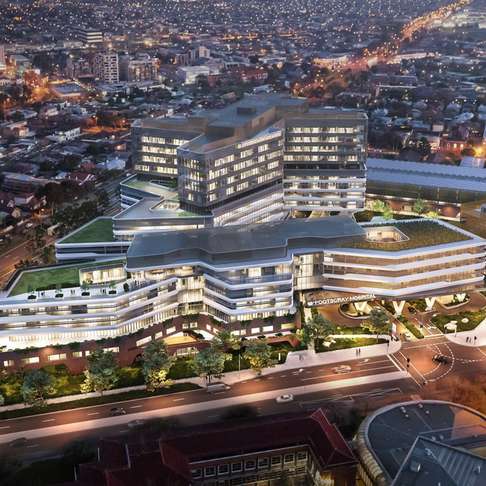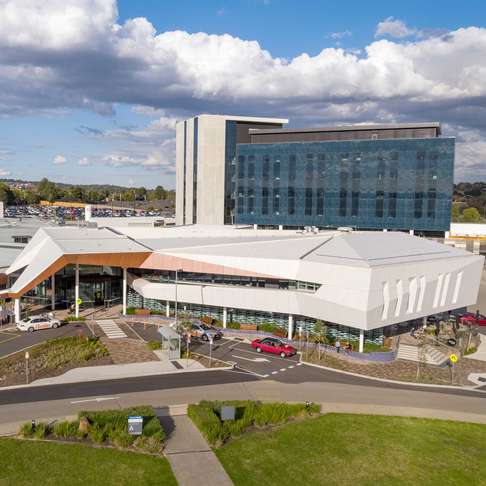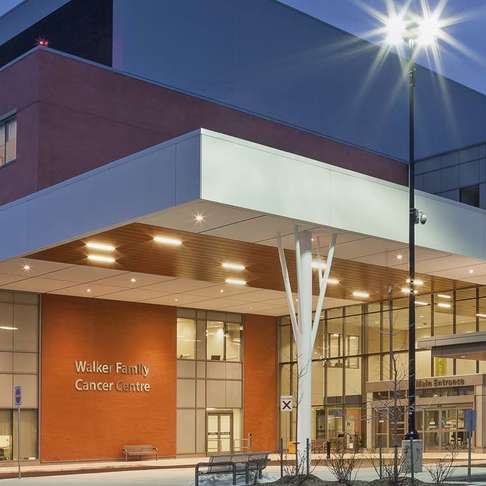The Victorian Comprehensive Cancer Centre is a purpose-built centre-of-excellence for cancer research, treatment, education and care.
It is home to cancer research, clinical services and educational facilities for Peter MacCallum Cancer Centre, Melbourne Health and the University of Melbourne.
Located in the prestigious Melbourne Biomedical Precinct the VCCC has realised its aim to become one of the top 10 facilities of its kind in the world.
The 130,000-square-metre facility includes:
- 110 same-day beds;
- 96 overnight inpatient beds;
- 8 operating theatres;
- 8 radiation therapy bunkers;
- a dedicated clinical trials unit;
- accommodation for families of country patients;
- more than 20,000 square metres of dedicated research space for up to 1,200 researchers;
- education and training facilities;
- 8 gardens and terraces comprising low-allergenic plants and materials; and
- 3 bridge links to new facilities at The Royal Melbourne Hospital.
Design features
ARCHITECTURE
The architecture is symbolic, representing the coming together of a number of significant healthcare partners and the creation of new networks and clusters of collaboration. The project is, at the same time, both a building and an image, one that expresses optimism and progress.
FUNCTION
The VCCC was designed to deliver maximum functional area with a blend of clinical, administrative, research and education facilities. It is easy to navigate due to its simple layout formed around a central atrium.This assists staff, patients and visitors navigate their way through the building, and provides natural light and a point-or-reference for wayfinding throughout.
Innovations
FINANCE
Being largely reliant on bank debt for financing, the project achieved the longest tenure of bank debt of this volume in the Australian market since the GFC. And, in somewhat of a breakthrough, Plenary included local Australia superannuation funds across all levels of the capital structure.
SUSTAINABILITY
Opportunities to increase energy efficiency and reduce greenhouse gas emissions have been incorporated in every stage of the design, and include:
- 'free cooling' air conditioning system to reduce energy consumption;
- innovative facade shading to reduce heat load impact and air-conditioning; and
- 350 spaces for bicycle parking
MASTER PLANNING
As an innovative commercial solution to future planning, Plenary delivered significant integrated future expansion capacity upfront, at no additional cost to the State, to allow for future expansion by building partners.


